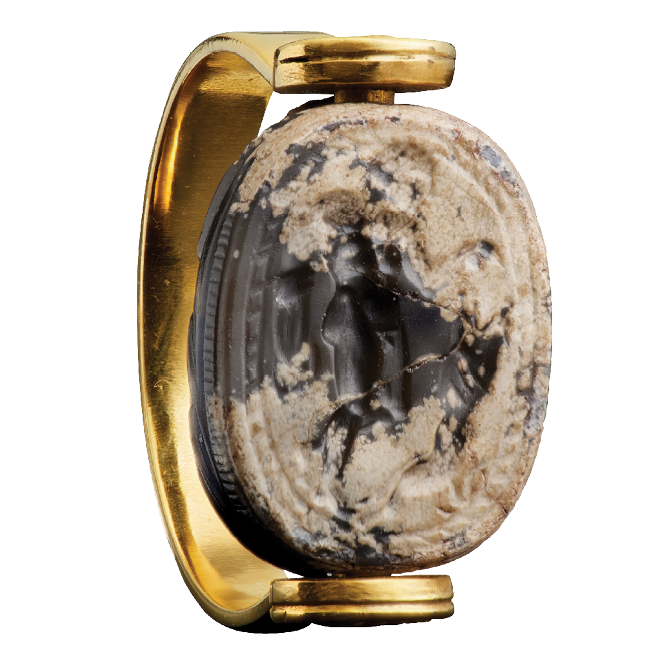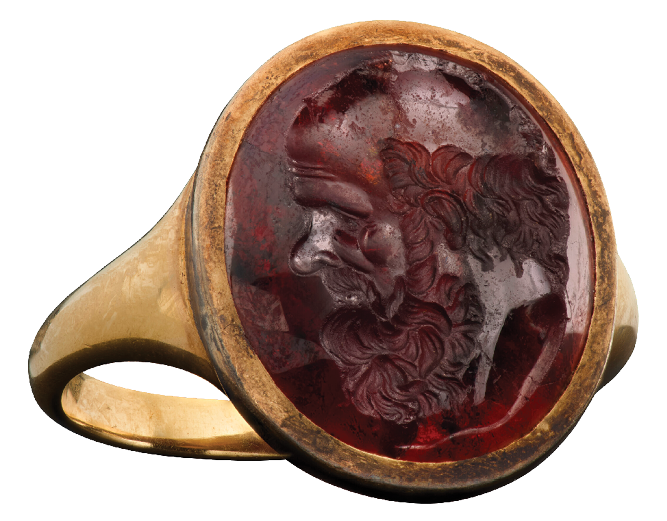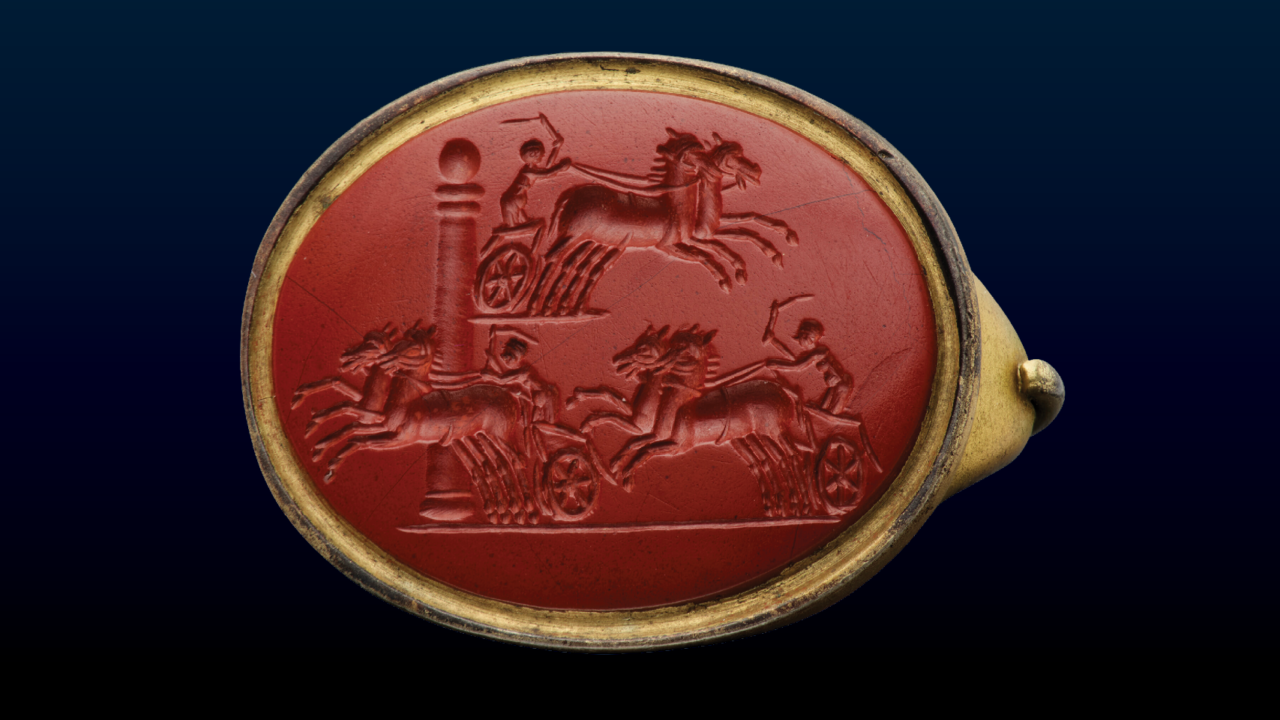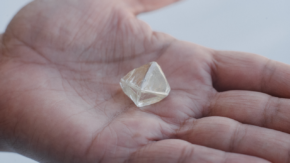A collection of nearly 60 engraved gems mounted in gold rings accounts for more than half the 109 lots in the upcoming Christie’s Antiquities auction. The pieces in the single-owner collection, which date back mostly to the ancient world, are set to go under the hammer in New York on April 9, carrying estimates of about $700 to $30,000. The majority fall in the $4,000 to $6,000 range.
The selection of intaglios and cameos includes rediscovered pieces from some of the most important collectors of such gems, who amassed them from the 16th to early 20th centuries, according to research by G. Max Bernheimer, Christie’s deputy chairman and international head of antiquities. As such, many of the pieces have well-documented provenance.
Most of the rings are from the Roman Republic, but some have Hellenistic, Etruscan or Greek origins. While the majority date from the fourth to first centuries BCE, there are more recent European-made rings from the Renaissance through the 18th century. Although the latter time periods are “not really my area of expertise,” says Bernheimer, he chose to keep those pieces with the rest of the collection “because it tells a story.”

(Christie’s Images Ltd., 2024)
Prestigious provenance
The collection is from the estate of Corinne Bronfman, an artist in Washington, DC, who lived from 1947 to 2022. She earned a PhD later in life and worked as an economist for the US Treasury. Her mother, Marjorie Bronfman, had purchased a collection of more than 275 rings in the latter part of the 20th century and given them to her daughter before her death, Bernheimer relates. How Marjorie Bronfman obtained the collection is unknown; the younger Bronfman’s heirs approached him with the collection.
“We now know that most of the gems are from prestigious older collections, many of which were considered lost until now,” he says.
Much of the collection once belonged to George Spencer, fourth duke of Marlborough, who lived from 1739 to 1817. Those items passed down through his family line for several generations. There are also pieces from the collection of Thomas Howard, the second earl of Arundel (1586 to 1646), and that of 19th-century mineralogist M. H. Nevil Story-Maskelyne.
Gems that we find from the ancient world are [mainly] in the quartz family. The most common are carnelian or chalcedony, grey or blue agate, banded agate and jasper.
‘Art in miniature’
Bernheimer has been passionate about carved gemstones since he was a teenager, when his grandmother gifted him a carved-gem ring that he still wears today. He has been with Christie’s for more than 32 years as a specialist in Greek, Roman, Etruscan, Egyptian and Near Eastern art and artifacts. He always takes a special interest when the opportunity arises to work with ancient carved gems.
“The estate managers sent me photos of the collection that were not very good,” he says, but “even from those photos, I was able to recognize a few of the gems as having been in the Marlborough collection. I was excited.”
The gem material is consistent with findings from the time period. “Gems that we find from the ancient world are in one variation or another in the quartz family,” he explains. “The most common are carnelian or chalcedony, grey or blue agate, banded agate and jasper. Occasionally, you’ll get stones that would today be considered precious or semiprecious, like beryl. We have a lot of garnet in the sale as well. The reason they generally survive in quite good condition is because they’re hard stones.”
For Bernheimer, three gems stand out. A first-century BCE Roman ring with a carved beryl image of Bacchus, part of the Arundel collection, is one of the two top lots in the collection, boasting an estimate of $20,000 to $30,000.
Another Roman ring with a carved beryl, this one from the first century CE and featuring an image of a gryllus — an animal-human hybrid common in intaglios — is from the Marlborough collection and carries an estimate of $8,000 to $12,000. The third is a red-jasper carving of a chariot race, also in a first-century CE Roman ring, from the Story-Maskelyne collection. Its estimate is $4,000 to $6,000.
“These carvings are the size of your thumbnail or smaller,” Bernheimer points out. “That’s the crazy thing about this: It’s all ancient art in miniature.”

c. second century BCE.
(Christie’s Images Ltd., 2024)
Main image: Roman red jasper ring depicting a chariot race, c. first century CE.
(Christie’s Images Ltd. 2024)
This article is from the March-April 2024 issue of Rapaport Magazine. View other articles here.
Stay up to date by signing up for our diamond and jewelry industry news and analysis.



